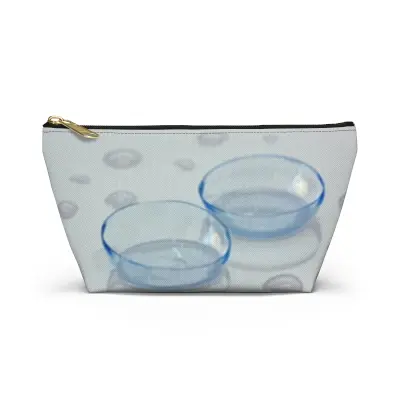Traveling with contact lenses can seem daunting at first, but with a few key tips and tricks, you can enjoy your adventures without any hiccups. Whether you’re exploring a bustling city or lounging on a tropical beach, these practical strategies will ensure your contact lens routine is as smooth as your travel plans.
Packing Your Contact Lens Essentials
Before you set off on your trip, ensure that you’ve packed all the necessary contact lens supplies. This includes enough lens solution, backup lenses, and a travel-sized lens case. Having these essentials at your fingertips will make managing your lenses on the go much easier.
It’s crucial to understand the traveling with contact lens guidelines before you depart. Pack your contact lens solution in the right bag, especially if you are planning to take it on the plane. According to TSA rules, contact lens solution is considered a medical liquid, which means you can carry more than the usual 3.4 ounces through airport security. However, to ensure hassle-free security checks, all liquids should ideally be packed in clear, quart-sized plastic bags. Additionally, consider carrying extra solution and lenses for emergencies. If you wear dailies, pack a few spare pairs to cover any unexpected needs during your journey.
Navigating Airport Security with Contact Lenses
When flying, it’s important to know how to handle your contact lens solutions through airport security. Remember to follow the liquid regulations and pack your solution in a clear, quart-sized bag. This will help you breeze through security without any issues.
Navigating through airport security can be a breeze if you prepare well. In addition to packing your solution correctly, remember that your travel kit can serve multiple purposes. If possible, use a stylish travel case that accommodates both your lenses and glasses, ensuring you have everything easy to access. This case acts as a mini organizer and can help prevent your contacts from being misplaced. Also, have your prescription or optometrist’s information handy, just in case you need assistance while traveling. In situations where you might need to find replacements, having this information can save you considerable time and stress.
Maintaining Eye Health in New Environments
Different environments can affect how your eyes feel with contact lenses. It’s crucial to stay hydrated, take breaks from wearing your lenses, and pay attention to any discomfort. This way, you’ll be ready to adjust your lens wear as needed to keep your eyes feeling great.
Traveling exposes you to a variety of new climates, each with its own challenges for contact lens wearers. Maintaining eye hygiene is essential. Wash and dry your hands thoroughly before handling lenses. Airplane cabins, for example, are notorious for their dry air. Such environments can irritate your eyes, making it important to use lubricating eye drops to maintain moisture levels. Avoid sleeping with your contacts in during flights, particularly on long journeys. Instead, make use of your backup glasses during rest periods to give your eyes a break. Ground conditions can vary too, with higher altitudes offering dryer air. Keep this in mind and adjust your care routine accordingly to ensure comfort.
Adapting to Changing Climates
It’s essential to be mindful of the climate you’re traveling to and how it might affect your lenses. Dry or dusty environments might require additional eye care products, like rewetting drops. Always be prepared to adapt your routine to maintain optimal comfort.
Weather changes demand a flexible eye-care routine. For instance, if you’re heading to a dry, arid region, the use of moisturizing drops is advisable to combat harsh conditions. However, in humid locations, the need for such products decreases. Dusty or sandy destinations call for added precautions; wearing protective eyewear can prevent particles from irritating your eyes. Sporting sunglasses with UV protection can shield against harmful sun rays, particularly if you’re planning a coastal or desert trip. You might also consider carrying a hat to provide your eyes additional shade. Adapting your strategy based on weather not only keeps you comfortable but enhances your ability to enjoy your travels fully.
Choosing Between Glasses and Contacts
While contacts are convenient, don’t forget to bring glasses as an alternative. Having glasses gives you flexibility and provides your eyes a break from lens wear, especially during long days of travel or if you experience any eye irritation.
Bringing glasses on your trip along with your contacts is a form of prudent planning. Not only do glasses offer an easy, low-maintenance alternative to contacts, but they can act as backups if you face any sudden lens issues. For those days when your eyes might feel tired, especially after extended wear or exposure to varying climates, reaching for your glasses can offer instant relief. They can also be fashionable accessories—help us help your style stand out with our unique eyewear cases designed for the trendy traveler. Simple switches between glasses and lenses can make your travel less stressful, saving your eyes from unnecessary fatigue.
Conclusion: Embark on Your Adventure with Confidence
By following these simple tips, you can ensure that your contact lenses are not a source of hassle during your travels. With proper preparation and mindfulness, you can focus on enjoying your journey and making memories, all while keeping your eyes comfortable and healthy. To make your travels even more remarkable, explore our range of unique travel accessories for a stylish and practical journey.


































































































